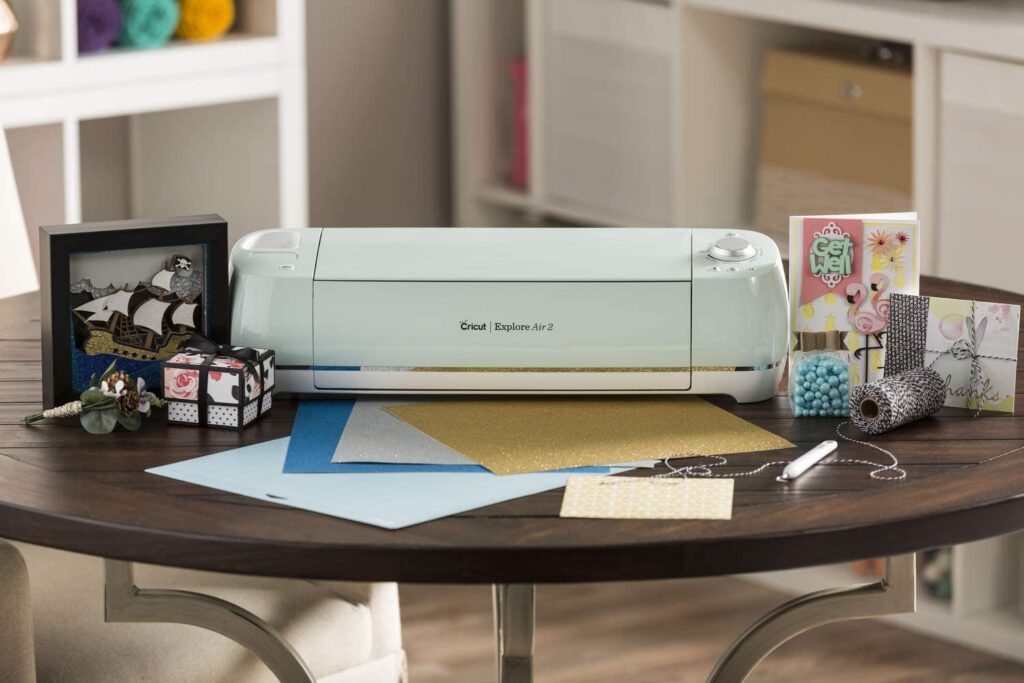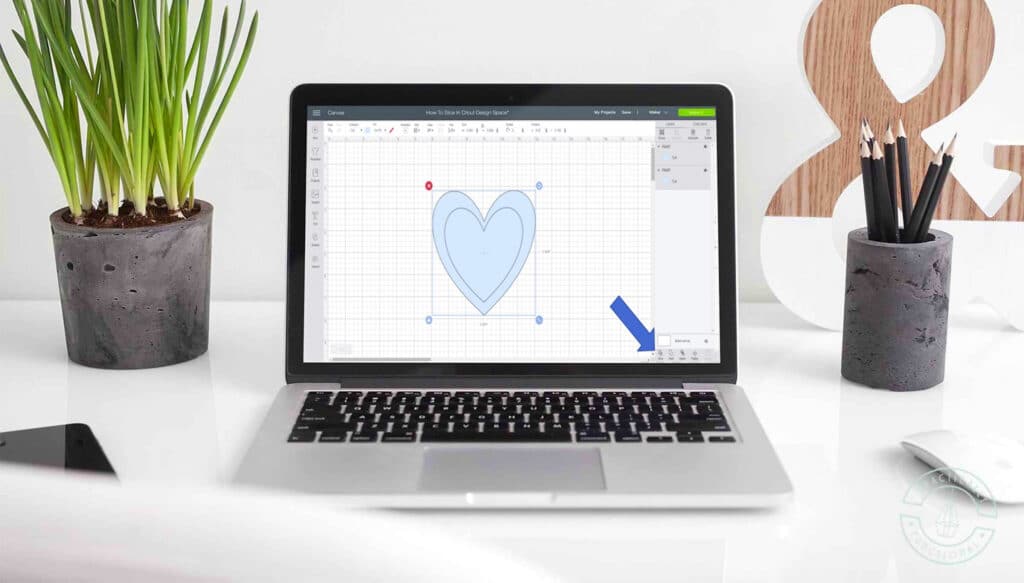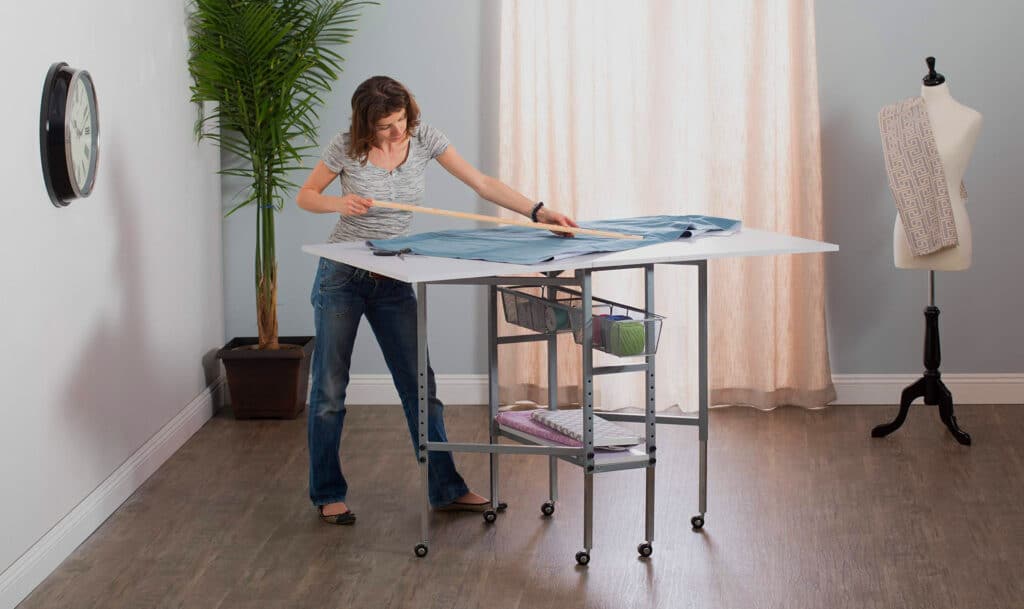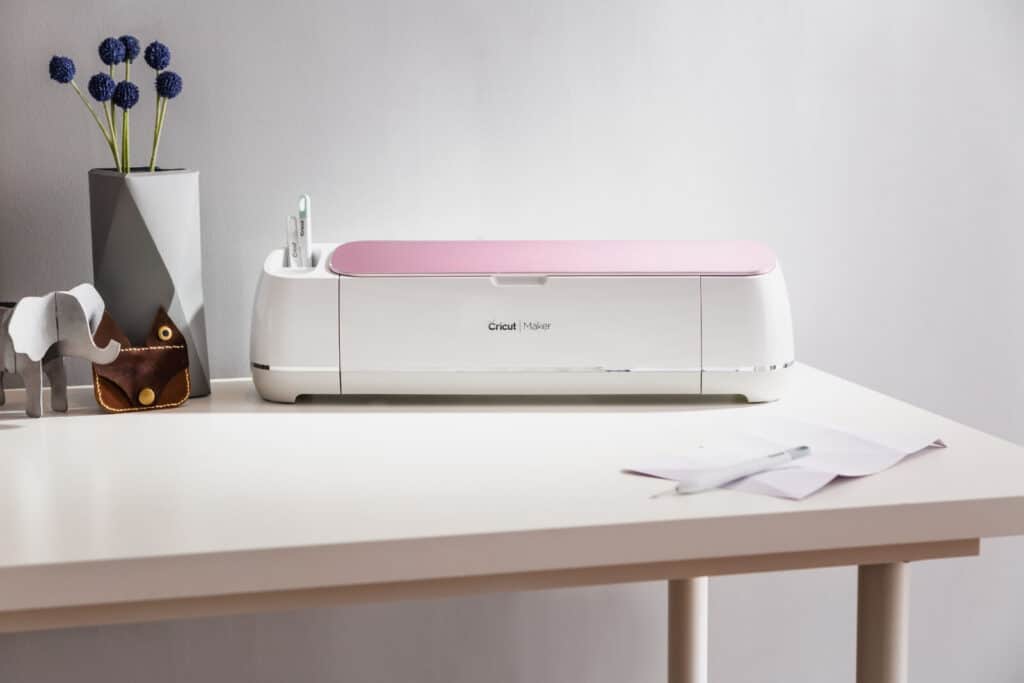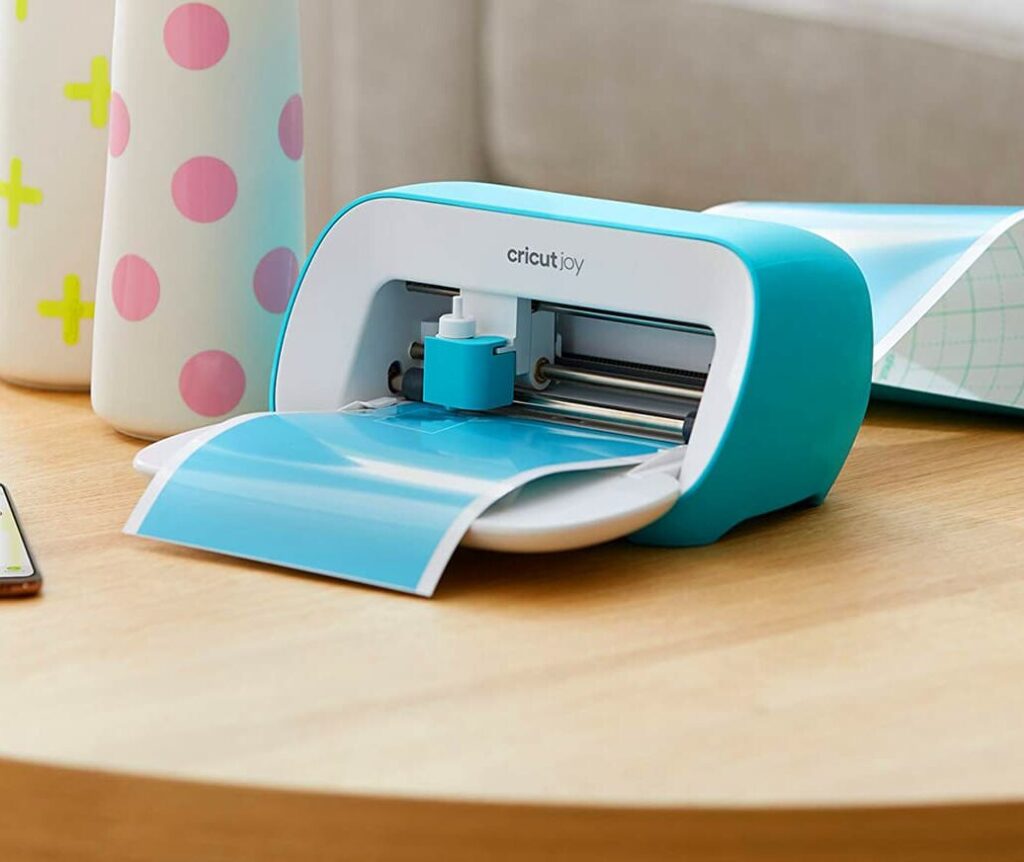



Most crafters stay on the lookout for the next piece of machinery to make their work and projects easier to pull off. One of the more recent offerings is the Silhouette Cameo 4, which was released late in 2019. It came roughly three years after the previous installation, the Cameo 3. Of course, this means a couple of improvements in the features and the technology used to make the device. This then necessitates a Silhouette Cameo 4 review so you can know the full scope of differences between this device, previous models, and even other craft-cutting machines from different manufacturers.
For users of the Cameo 3 or other previous Cameo desktop cutting machine models, a review should help you decide if an upgrade to the new equipment is worth it or not. It’s also worth looking at for beginners looking to buy their first craft-cutting machine. Accessing that review is as easy as reading the sections below.
Having an in-depth look at the features of the Silhouette Cameo 4 is an excellent way to determine whether it’s worth your money or not. Among the key selling points is the power of the machine, which is several times more than that of its predecessor and gives most competitors a run for their money. Additionally, there are improvements in cutting speed, the user experience, and other areas meant to set this option apart from other cutting devices. We take an in-depth look at these features and more in the sections below, thereby allowing you to make an independent conclusion on the matter.
In terms of performance, the Silhouette Cameo 4 is a professional-grade machine that’s dependable even when there is a considerable workload. Among the reasons for this is the 5000g cutting force of the device, which ensures it can cut through different materials without a glitch. For context, the Cameo 3 had a downward force of just over 200 grams, and it was still able to cut over 100 types of materials. This, of course, puts the Cameo 4 miles ahead of its predecessor.
Of course, speed is also a requirement for professionals due to the deadlines they have to deal with. The Cameo doesn’t disappoint in this area either, thanks to the new solenoid motor, tool detection, and the single tap reset features.
Additionally, the tool detection, touch panel, and other features like a built-in roll feeder and cross cutter make the device less intimidating to beginners. After all, there is less manual work, and the user doesn’t need to buy as many accessories.
The machine comes with various blade adapters making it compatible with the blades from previous devices and even some from third-party manufacturers. The next sign of the tool’s versatility is its compatibility with the new tools, including rotary, kraft blades, and even a punch tool that are sold separately.
Another selling point is the device’s mat-less cutting performance which is exceptional and handy when cutting materials like paper and cardstock. There is even better integration with Silhouette Studio software which has been improved significantly from previous iterations. All in all, the performance of the Silhouette Cameo 4 is exceptional, and we get into the specifics in the sections below.
Where construction is concerned, the Silhouette Cameo 4 comes with a fairly large body, especially in comparison to its predecessor. This body houses a 12” cutting space. However, there are other variations of the Cameo 4, namely the Cameo Plus and the Cameo Pro, which feature 15” and 20” cutting widths, respectively. While the cost of these devices is higher, it’s good to have these options if the 12” cutting width is insufficient for your needs.
For those with limited work table space, the bigger size may be a bummer, but the design also has some upsides to it as well. One is the dual carriage which also supports the dual motor system of the device. This dual carriage system works with four different blade adapters. One is the fabric blade/ratchet blade adapter. The next one is the deep-cut blade/premium blade adapter. After that, you have the kraft blade adapter, even though the kraft blade is sold separately. Finally, the last adapter is for sketch pens and third-party tools.
There’s also a tiny problem with this dual carriage system in terms of compatibility with cutting tools. Some of the blades will only work if installed on the right side, while others work only on the left. While inconvenient for some, it’s likely not a deal-breaker.
Next is the pull-out roll feeder, which was conspicuously absent from its predecessor. This feeder can hold vinyl rolls that are up to 150 feet long. Of course, if you put in a roll of vinyl or heat transfer material in the feeder, then cutting these materials becomes easier and faster for the user. There’s also the inclusion of a built-in cross cutter and a punch/weeding tool that helps users trim the material to size after a cutting session.
Another design aspect of the Silhouette Cameo 4 is the auto-tool detection feature which is there to automatically adjust your blade settings according to the needs of the project and the cutting tool you have attached. Lastly, this machine features an intuitive backlit touch panel.
The silhouette Cameo 4 is also an improvement from the Cameo 3 in terms of the materials you can cut. However, your cutting capabilities may also be limited by the blade options you own. Remember that the kraft blade, rotary blade, and punch blade are sold separately, and you might not have them when you first get the machine.
With the auto blade being the only option provided, you should be able to cut the most common craft materials with examples such as paper, vinyl, heat transfer papers, and more. If you get the rotary blade, it is ideal for leather, felt, cotton fabric, wool, and more.
On the other hand, the kraft blade is more suited to cutting specialty craft materials that, admittedly, can get very thick. These include examples like acetate, craft foam, leather, burlap, and more. The list of materials the machine can cut doesn’t end there, with other options like cork sheets and balsa wood being included.
Unfortunately, the only blade included with the initial purchase is the auto blade. This blade features sintered Tungsten alloy construction. Also worth mentioning is that the device uses the second generation auto blade, which has superior speed when you use the single-tap reset. This means that automatic blade adjustments are much faster.
Notably, the machine recommends the cut settings for some of the common materials, but adjusting them in the software is also possible. That said, the compatibility with other blades is also worth a bit of praise. This includes new blades in the Cameo lineup, such as the rotary blade, kraft blade, and the punch tool.
The rotary blade consists of tungsten carbide construction, and as we’ve already highlighted, it can cut several materials without needing a stabilizer. Some examples are wool, leather, and felt. Adding a strong tack cutting mat also expands the cutting capabilities of the rotary blade.
As for the kraft blade, you can change the length of the edge from 0.1mm to 3mm. This blade features stainless steel construction and, unlike the auto blade, can only be adjusted manually. Its forte is cutting specialty craft materials with examples such as acetate, leather, burlap, craft foam, cork sheets, and balsa wood.
Lastly, you have the punch tool whose main job is to create weeding points. Like the rotary blade, this option is also made of tungsten carbide. There is also the option of adding third-party blades to this machine’s setup with the included adapter.
Like we mentioned before, the basic machine setup features a 12” cutting width which by most people’s standards is sufficient. However, some exceptions are expected, especially for people using the machine in a professional capacity. Every so often, you might be requested to create a relatively large custom project by a client.
This is why you get two other offerings from the manufacturer. They are the Silhouette Cameo Plus and the Cameo Pro, which were released shortly after the first option. Worth mentioning is that they are similar to the basic Cameo 4 in every way except for the cutting width. The Plus cuts a maximum of 15” while the Pro goes a step further to cut 20”.
This extra cutting width doesn’t come free. Instead, you’ll need to pay about $100 extra dollars for the Plus and $200 extra for the Pro. However, if you need extra functionality and cutting width, paying the extra fees should be no problem.
Of course, if you’re looking for a potential craft cutting machine purchase, you’re going to check the speed of your options. After all, you don’t want your cutting projects to take forever to complete. With the Silhouette Cameo 4, you’re sorted. Remember that it comes with a new dual-motor system that is a significant upgrade from the single motor system of the Cameo 3.
Each motor works on one side of the dual carriage system of the device. For instance, carriage 1 is operated by a solenoid motor whose main advantages are intricate and smooth cuts in addition to boosting the cutting speed. In fact, the speed is rated at 3X the speed of previous Cameo models, e.g., the Cameo 3.
Carriage 2 is the option you pick if you want to use the full power of the machine. This is the section with a downward cutting force of 5kg. However, it doesn’t work with just any blade. You’ll need to spend money on the kraft blade if you want to make full use of the machine’s cutting force. As such, you’ll alternate between the two carriages depending on whether you need speed or power in your project.
Software
This machine comes with a free version of Silhouette Studio software. It has been described as both robust and powerful, which are two descriptors that we agree with. Notably, you’ll be using version 4.3 or later of the program, which eliminates some of the glitches of previous iterations. Another thing the software has going for it is its simplicity. Compared to other craft-cutting design software in the market, this is one of the easier-to-use options.
Some people would also prefer not to use Silhouette Studio software because they are used to other options such as Corel Draw or Adobe Illustrator. The manufacturer has you covered with a feature termed “Silhouette Connect.” This allows you to couple the two software options mentioned with the Cameo 4 as long as you have the required plugin. Additionally, the Silhouette Design Store offers extra design functionality since you can download and use SVG files, fonts, and cuts with your machine.
The dual carriage is one of the key features of the Silhouette Cameo 4 device. It supports the dual-motor system as described above, where one motor provides more power while the second one provides a higher cutting speed.
Another thing the dual carriage system is responsible for is the tool-type detection. It supports the ultra-smart system to determine whether you’ve put in the auto-blade, the rotary blade, or the kraft blade. After that, it sends information to the Silhouette Studio software prompting it to automatically adjust cut settings to fit the cutting tool.
If you’ve used the Cameo 3 and other older and noisier craft cutting machines, then the relative quietness of the Silhouette Cameo 4 will likely be a welcome surprise. It still produces some noise but not enough to wake up your kids if you’re working in the basement. While it could also be quieter, we would be picking at straws if we said the noise level is a problem. Most users won’t have a problem working with the device as it is.
In terms of connectivity, you get the same options you had with the Silhouette Cameo 3. This includes the USB option to connect the Cameo 4 to your computer using a wired medium. Alternatively, you can set it up using a Bluetooth connection. This, of course, allows you to access and use Silhouette Studio software on your PC since you get it for free with the machine.
As we mentioned before, the device’s connectivity also allows you to connect with and use third-party design software such as Corel Draw and Adobe Illustrator.
Concerning the ease of use, there are a couple of things you need to look at. One is the software package included. Since it will be heavily involved in all your projects, the use dynamics are bound to influence your experience with the Cameo 4. Luckily Silhouette Studio software is one of the simplest options in the market when it comes to design software.
Also, let’s not forget that the device supports some third-party software options for those who have prior experience or a preference for them. Another thing that may affect the ease of use is the device’s design, which shouldn’t be hard to figure out. You can clearly see most of the components of the device, including the blade housing, buttons, the touch panel, a USB port, and more.
Notably, you can use the touch panel to control some of the machine’s functions, e.g., loading, unloading, and pausing your projects. Some other features that make it easier to use the Cameo 4 are auto-tool detection and auto blade adjustment. With these, you just put the blades in the right place and wait for the device to do most of the work.
The size and weight of the Silhouette Cameo 4 are not the device’s strong suits, especially in comparison to the predecessor. That said, they are not a huge problem either. In terms of size, the Cameo 4 is about a measly 3% increase in size from the Cameo 3. However, the weight is a different story where the newer machine weighs almost twice as much as its predecessor, making it more challenging to transport.
Ultimately the additional features such as the improved downward cutting force and dual-motor system may be plausible explanations for the slight increase in size and weight. It should, however, still be a good fit for most worktables.
Also worth mentioning is that the Plus and Pro versions of the device are larger and heavier to cater to the extra cutting width.
The warranty is standard for all Silhouette devices, so you’ll get the same coverage as the Cameo 3 as well as other predecessors in the manufacturer’s lineup. This includes one year of protection for the machine, although some components are considered consumables therefore not included in the warranty. Examples include the blade and cutting mat.
If you bought the device from the US, US territories, or Canada, Silhouette America is responsible for sorting you out. If, on the other hand, you buy the device from other stores in the world, it will be up to you to confirm the warranty terms and coverage information before the purchase.
If you’re thinking of buying this craft cutting machine, it should be available for about $300, which is close to the manufacturer’s recommended retail price. This is about $100 more than you would pay for the Cameo 3. Although this might be a problem for some of you, we would argue that the extra features and functionality mean the price bump is fairly reasonable. Also, as we mentioned before, the Plus and Pro variations come with a $100 and $200 price bump, respectively.
As for the color options, you can only pick one of three: black, white, or blush pink. This is, however, limited to the basic 12” device. As for the Plus and Pro, they are only available in white. That said, one has to wonder if the manufacturer will repeat what they did with the Cameo 3 and produce more color options at a later date.
Some of the extra features are things we’ve touched on in passing in the sections above. One example is the cross cutter. This component is there to ensure a clean straight cut on your vinyl rolls. It features a rotary-style blade that has also been designed to last longer and give great cutting results every time.
Another extra feature is mat-less cutting with a few materials such as cardstock and paper. However, most of the other materials you encounter will require a mat, so one is provided upon purchasing the device.
There have been several comparisons with the Silhouette Cameo 3 as the predecessor to the machine we’re currently reviewing. These comparisons show several significant upgrades and improvements in several areas. One of the most basic upgrades is in the motor used. While the Cameo 3 used a single motor, the Cameo 4 now uses a dual-motor system.
Another improvement is in the power and speed of the tool. In fact, the Cameo 4 is believed to be capable of 3X the cutting speed of the processor. The downward cutting force is another area where the Cameo 4 leaves its predecessor in the dust. While the Cameo 3 only features 221 grams of downward force, the Cameo 4 has more than 20X that power with a maximum downward force of 5000g.
A smaller difference is there in the type of auto blade used in the two machines. Both are capable of auto-adjustments, but the second generation of the same built into the Cameo 4 makes adjustments much faster.
Lastly, there are a few things and features the 2019 model has that are absent from the cameo 3. These include the weeding tool, touch panel, and automatic tool detection. The older option also doesn’t allow the use of third-party tools.
Alternatively, a significant upside in favor of the Cameo 3 is the price. Being older means it’s cheaper than the Cameo 4. Another one is that the Cameo 4 doesn’t have a built-in option to repeat the previous cut. This, according to users, is one of the Silhouette Cameo 4’s biggest downsides.
|
PROS |
CONS |
|
|
Also, the Cricut Maker is the Silhouette Cameo 4’s primary competition and as such, comparing the two is necessary as well. There are some ways the Cameo 4 is better than the Cricut Maker, with one being the downward cutting force. The former offers 5kg force while the other offers 4kgs. Notably, this is a fairly slim margin.
The next area where the Silhouette is superior is in the maximum cutting size of the tool. With the Cricut maker, your only option is 12” X 24”. As for the Silhouette, you have three size options depending on the model you buy. They include 12” X 10”, 15” X 10” and 20” X 10”.
Lastly, you get to save more on your purchase if you pick the Silhouette device. As for the areas where the Cricut Maker is better, one is in the variety of cutting tools available. The resulting flexibility and versatility of the machine are worth some praise. The access to digital sewing projects also sets this device apart from the Silhouette device.
Except for the obvious difference where the Design Space is meant for use with Cricut machines while the Studio software is intended for Silhouette devices, there’s also a difference in user experience. The Design Space caters to people who prefer a simple process of opening up and cutting files. On the other hand, the Studio software allows a little bit of tinkering with the designs, therefore, offering more versatility.
Not only is it possible, but it can also lead to problems with the way your machine works. For instance, over-tightening can introduce cracks in the blade’s housing. In the case of the auto blade, this can be a rather big issue where the machine will be unable to make the correct blade adjustments. However, some of these parts are replaceable if you make such a mistake.
For better performance, you should verify that you’re using the current firmware version, and if not, you can update it. The process for the same includes installing the latest version of Silhouette Studio software. After that, you open the app and head over to the “send” panel. Connect your cutting machine to the PC using the provided USB cable.
Clicking the “Silhouette devices” icon shows you available machines, and you can select the USB connection option. The machine will prompt an update if one is required. You should also remember that turning the Cameo 4 off while it’s updating is a bad idea.
In our Silhouette Cameo 4 review, we felt that the device is worth every bit of praise it’s gotten so far. It even offers excellent value for money for people at different craft-cutting skill levels. After reading the review, you can decide if getting it as your next purchase is worth it.
